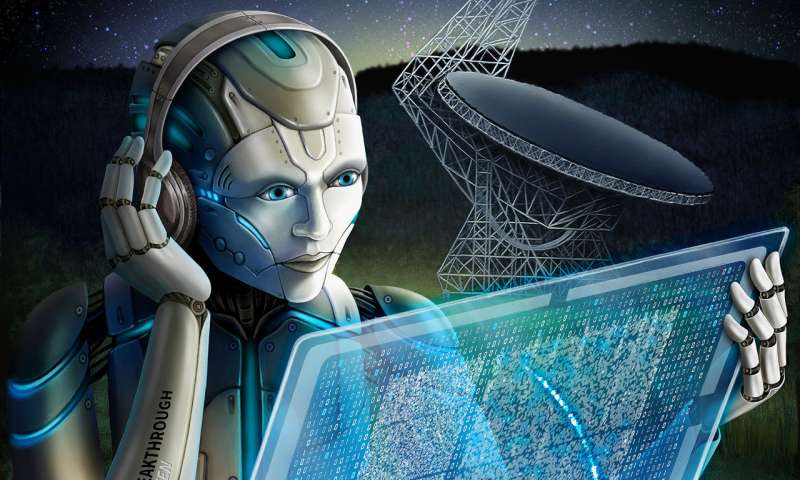
Last year, astronomers tasked with hunting alien signals identified 21 repeating light pulses emanating from a dwarf galaxy located 3 million-light years away. The source could be a fast-rotating neutron star — or it could be alien technology, perhaps meant to propel a space-sailing craft. Now, the researchers used artificial intelligence to pore through the dataset to discover 72 new fast radio bursts generated by the mysterious light source.
Fast radio bursts (FRBs) are bright pulses of radio emission mere milliseconds in duration. The signals acquired by the Green Bank Telescope in West Virginia and then initially analyzed through traditional methods by the Breakthrough Listen — a SETI project led by the University of California, Berkeley — lasted only an hour.
What sets the source in question — called FRB 121102 — apart from other on-off fast radio bursts is that the emitted bursts fired in a repeated pattern, alternating between periods of quiescence and frenzied activity.
Since the first readings made on August 26, 2017, the team of astronomers has devised a machine-learning algorithm that scoured through 400 terabytes of data recorded over a five-hour-long period.
The machine learning algorithm called a “convolutional neural network” is often employed by tech companies to display online search results or sort images. It found an additional 72 bursts not detected originally, bringing the total number of detected bursts from FRB 121102 to around 300 since it was initially discovered in 2012.
“This work is exciting not just because it helps us understand the dynamic behavior of fast radio bursts in more detail, but also because of the promise it shows for using machine learning to detect signals missed by classical algorithms,” said Andrew Siemion, director of the Berkeley SETI Research Center and principal investigator for Breakthrough Listen, the initiative to find signs of intelligent life in the universe.
The mystery still lingers, though. We still don’t know much about FRBs or what produced this sequence, but the new readings help put some new constraints on the periodicity of the pulses generated by FRB 121102. It seems like the pulses are not fired all that regularly after all, at least not if the pattern is longer than 10 milliseconds. More observations might one day help scientists figure out what is driving these enigmatic light sources, the authors of the new study wrote in The Astrophysical Journal.
“Whether or not FRBs themselves eventually turn out to be signatures of extraterrestrial technology, Breakthrough Listen is helping to push the frontiers of a new and rapidly growing area of our understanding of the Universe around us,” said UC Berkeley Ph.D. student Gerry Zhang.






